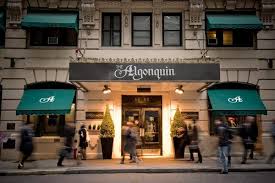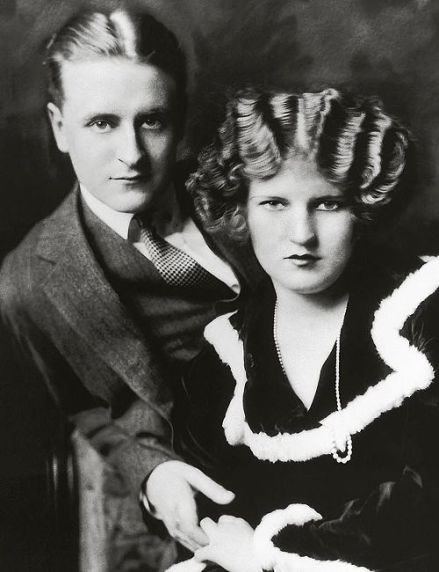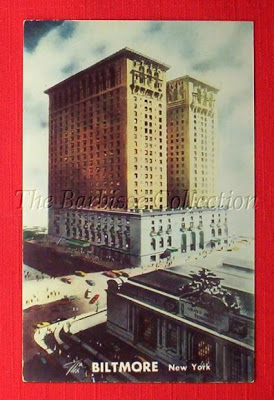Happy birthday, John Quinn!
We interrupt our usual posting of events that happened 100 years ago with a momentous event of 150 years ago.
Regular readers of this blog [you know who you are] will have wondered who this John Quinn fellow is, supporter of art and artists, who keeps popping up 100 years ago. Hosting Irish poet William Butler Yeats and his wife in New York. Writing and receiving letters to and from American ex-patriate poet Ezra Pound. Buying manuscripts of works by writers like Yeats, Joseph Conrad and James Joyce.
Below is a posting I wrote in 2003 about Quinn in my weekly blog, “Every Wednesday: The Journal of a Teacher in Search of a Classroom,” chronicling my year of unemployment in south Florida. [#shamelessselfpromotion: Available in paperback on Lulu.com, Or on Amazon combined with my other Gypsy Teacher blogs.]
“Every Wednesday: I Want to Tell You About an Amazing Man”
When I was doing my research for my dissertation on early 20th century writers’ salons—W B Yeats and the Irish Literary Renaissance, Virginia Woolf and the Bloomsbury Group, Gertrude Stein and the American expatriates in Paris, and Dorothy Parker and the Algonquin Round Table—there was this character who kept popping up. Like Woody Allen’s Zelig he appeared in biographies, memoirs and letters of the time, as well as in group photos of people like Yeats, Picasso, Matisse, Ezra Pound, James Joyce. Who was this guy? He certainly had “such friends.”

James Joyce, Ezra Pound, Ford Madox Ford, and John Quinn
When I first came across Quinn, I checked the bibliographies and saw that there was one biography about him, B. L. Reid’s The Man from New York: John Quinn and His Friends (New York: Oxford University Press, 1968). Earlier this year I began doing some research on the 1913 New York Armory Show to include in my work-in-progress about the writers’ salons, “Such Friends.” There was John Quinn again, buying art in Paris, organizing the first exhibition of international modern art in the United States, writing to Conrad and other struggling writers of the time.
Jealous that someone else had written the definitive history of this intriguing creature, I broke down and took the biography out of the library. I discovered that it’s not great—good research but not well-presented, hard to read. And, worst of all, the author makes this fascinating man’s life seem boring.
So here is the John Quinn I discovered. I’m still working on some of the details.
He was born in Tiffin, Ohio, on this date in 1870 of Irish immigrant parents; his father was a baker. He grew up in middle-class Fostoria, Ohio, and attended the University of Michigan. A family friend who became Secretary of the Treasury under President Benjamin Harrison offered Quinn a job with him in Washington, D.C. While working full-time in the federal government, he went to Georgetown University law school at night. After receiving his law degree, he earned an advanced degree in international relations from Harvard University. Not bad for the son of a shanty-Irish baker.
Quinn then moved to New York City, which was to be his home for the rest of his life. He predictably got a job with a major New York law firm and worked on a lot of high profile corporate cases. During a two-year period there were a lot of deaths in his family—parents, sisters, etc.—and he began to explore his Irish roots.
Right after the turn of the century he went to Ireland and, while attending a Gaelic language festival in the west, near Galway, met Lady Augusta Gregory and other friends of Yeats involved in the Irish Literary Renaissance. While helping them found the Abbey Theatre, he started his own law firm in 1906. As you do.
His successful firm was supported by retainers from major corporations, and he became involved in New York’s Tammany Hall politics. But when his candidate didn’t get the nomination at the 1912 Democratic Party convention, he got disgusted with the whole system (go figure). After that he turned his considerable energies to art and literature.
Quinn did delegate a lot of the work in his law firm when he was away, but, like a true control freak, he was always unhappy with the way his employees handled everything. During the first two decades of the 20th century he managed to:
- Help organize the Armory Show,
- Fight Congress to have a tariff on contemporary art changed,
- Bail out the Abbey Theatre after they were arrested for performing John Millington Synge’s The Playboy of the Western World in Philadelphia,
- Have an affair with Lady Gregory and a number of other much younger women, some of whom he “shared” with Yeats,
- Support Yeats’ father in New York City by buying his paintings and Yeats’ manuscripts,
- Support James Joyce in Paris by buying his manuscripts as he wrote them,
- Argue the original case to have excerpts of Ulysses published in the Little Review magazine in the United States, and
- Amass an incredible collection of modern art, focused primarily on European painters.
During that time he kept up a detailed correspondence with all of the above as well as Maud Gonne, Augustus John and many other cultural luminaries of the early 20th century. Quite a guy. I get tired just thinking about all he accomplished.
Quinn died of intestinal cancer at the age of 54, and, having no children, was generous to his sister and niece, but willed that his art collection be sold off and dispersed among museums and collectors around the world. And it was.

John Quinn and William Butler Yeats
Yesterday I gave my first presentation about the Armory Show to a group of art collectors at the Boca Raton Museum of Art. I tried to communicate to them John Quinn’s enthusiasm for supporting the living artist as well as the art.
Currently I am doing more research about Quinn and plan to write an article about him. Eventually I would like to give him the decent biography he deserves. I’ll keep you posted.
See you next Wednesday.
Thanks for reading. You can e-mail me at kaydee@gypsyteacher.com.
“Such Friends”: 100 Years Ago… is the basis for the book, “Such Friends”: The Literary 1920s, to be published by K. Donnelly Communications. For more information, email me at kaydee@gpysyteacher.com.
In 2020 I will be talking about writers’ salons in Ireland, England, France and America before and after the Great War in the University of Pittsburgh’s Osher Lifelong Learning program.
Manager as Muse, about Scribner’s editor Maxwell Perkins and his relationships with F. Scott Fitzgerald, Ernest Hemingway and Thomas Wolfe, is available on Amazon in both print and Kindle versions.
If you want to walk with me through Bloomsbury, you can download my audio walking tour, “Such Friends”: Virginia Woolf and the Bloomsbury Group.














